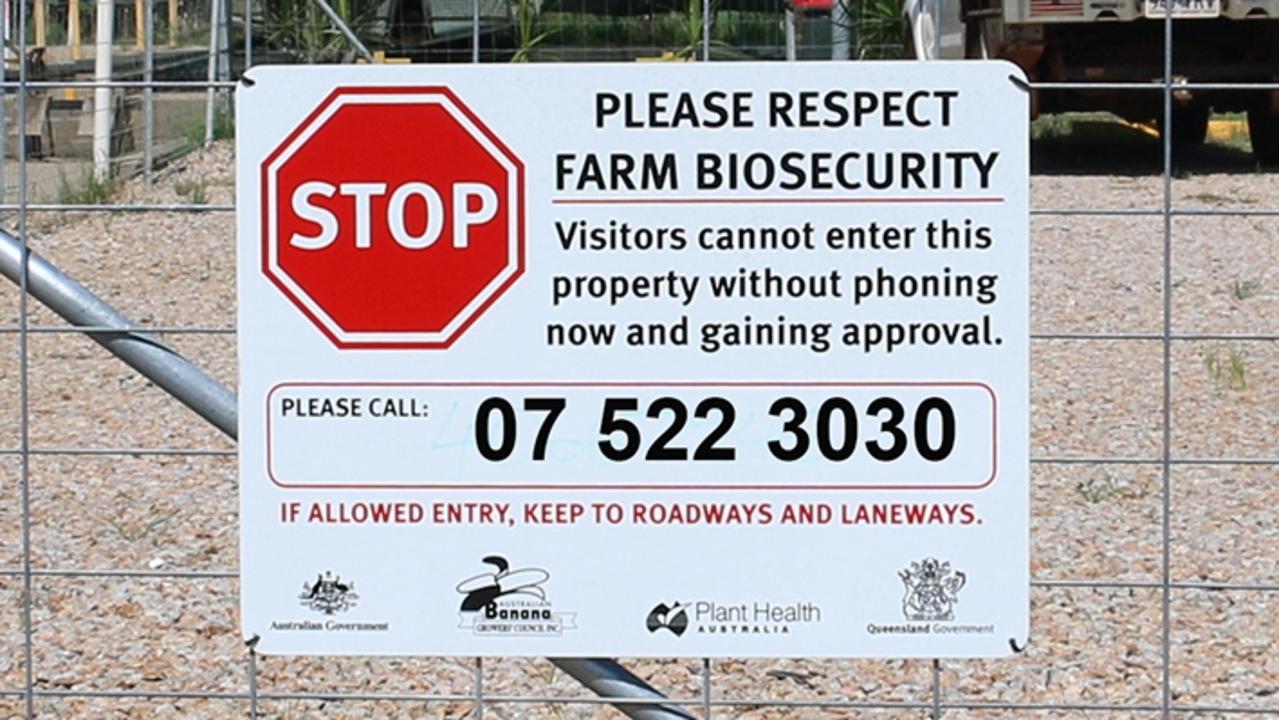Victoria at high risk for FMD as farmers urged to up biosecurity
Experts and farmers share detailed biosecurity plans, as producers are urged to prepare for a worst-case FMD scenario.
The threat to Australia from the Indonesian outbreak of foot and mouth disease is likely to last for years, and farmers are being urged to step up on-farm biosecurity measures as a last line of defence.
Speaking at a Grain Growers Ltd biosecurity webinar this week, Department of Agriculture, Fisheries and Forestry head Dr Chris Parker said farmers needed to have on-farm biosecurity measures in place in case pests and diseases broke through national defences.

“(The government is) doing … almost as much as physically possible at the border. And then the state government’s doing their surveillance,” Dr Parker said.
“The last line (of defence) is ensuring that we’ve got adequate (on-farm) biosecurity.”
It was an “uncomfortable fact” that farmers and their families could put their own businesses at risk, he said.
“Let’s be honest, who is the most likely to bring (FMD) into the country?
“Probably farmers or farmers’ sons and daughters who have travelled and not done the right thing.
“Now I know, that’s an uncomfortable fact, folks. But it’s the most likely thing when we think about it.”
QUEENSLAND COTTON FARM BIOSECURITY BLUEPRINT
Central Queensland cotton farmer Renee Anderson has had a biosecurity plan in place on her property since 1997, and said simple biosecurity strategies were now part of day-to-day practice on the farm.
“For us, farm hygiene is absolutely our best defence against pests, weeds and diseases,” Ms Anderson said.
“It’s more than just a sign at the gate. That’s a really good awareness for those coming in and out, but (biosecurity) has to be included in day-to-day practices.

With a large number of people coming and going from the property every week, including consultants, resellers, agronomists, researchers and community members, Ms Anderson said getting biosecurity measures right was crucial.
“The Central Highlands is considered high risk … come-clean-go-clean practices have been ongoing since we started farming,” she said.
Biosecurity practices in place on Renee Anderson’s farm include:
- A QR code to keep track of who’s coming on and off the farm.
- A PURPOSE-BUILT wash down pad for all machinery and vehicles entering the farm.
- FOOT BATHS for visitors entering the property to clean their shoes.
- LIMITED entry points to the property.
- REDUCED movement when it is raining to limit the spread of pests and diseases through mud.
- SIGNS on the property with biosecurity and contact information.
For more information, the Meat and Livestock Association and Grain Growers Ltd have developed biosecurity checklists for farmers to implement on farm.
VICTORIA AT RISK
Victoria’s farming industry, in particular, could see FMD spread quickly should an incursion into the state happen.
More than 1200 Victorian farmers - about 20 per cent of the state’s livestock producers - attended a Victorian Farmers Federation FMD webinar last night, where stark messages were delivered.
While attention has been on international borders, Agriculture Victoria’s emergency animal disease principal officer Dr Megan Scott said livestock producers should think about their own borders around their farms.
Dr Scott said there was a “perfect storm” for an emergency animal disease outbreak in Victoria.
As a state, Victoria had a diverse livestock population, proximity of farm businesses, a range of species that could all spread the disease (sheep, cattle, pigs) and the climatic conditions were right.
Adding to this was the high level of interstate animal movements into the state to large processors.

Dr Scott said farmers should take biosecurity on their own farms seriously and think about who came on to their properties.
“Control the border at your fence line,” Dr Scott said.
“There are basic biosecurity measures that you can take – have clean boots and workwear, restrict access to your livestock holding areas like yards, shearing sheds and the dairy, and even think about having a pair of boots that you only wear on the farm.”
FMD ADVICE FROM VFF UPDATE
- AUSTRALIA has one million doses of vaccine, which are held in the UK and would be available for use within seven days
- ANY stock standstill if FMD is found in Australia will likely involve wool, grain and fodder, not just livestock
- INSURANCE companies have indicated they will not be paying out compensation for animals destroyed in control measures
Dr Scott said there was information about disinfectants that farmers could use for biosecurity especially to protect against FMD, which was listed on the Australian Pesticide and Veterinary Medicines Authority website under permit number PER83649.

Those products include Virkon S, Viraban, a dairy sanitiser, formaldehyde and even citric acid.
Virkon was the product that was deemed unsuitable for use in airport footbaths.
Dr Scott also outlined what would happen in a livestock standstill, which could include the inability to cross borders.
She said the department was now working with saleyards to establish protocols and plans of how they would manage livestock in the event of an outbreak of FMD.
Department of Agriculture, Forestry and Fisheries head of national animal disease Dr Chris Parker said an expert panel had recently assessed the risk of FMD and had ramped up the threat of an incursion within five years from 9 per cent a year ago to 12 per cent this June.
He defended the action taken by the department over border checks, said the only other country to have as robust a system was New Zealand, and that they were “very open about ideas”.




